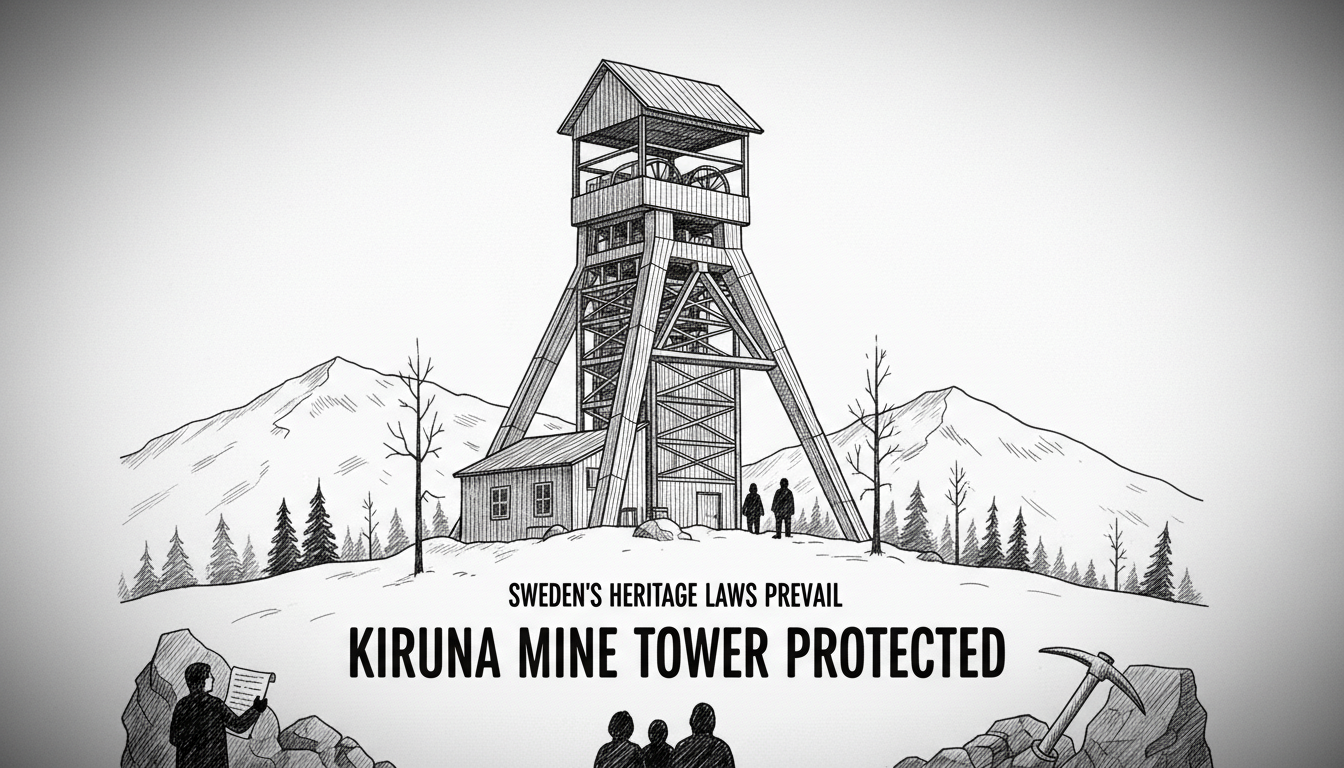A historic mine tower in Kiruna, Sweden has received legal protection against demolition. The decision represents a victory for cultural preservation advocates but creates complications for the mining company that sought to remove the structure.
The square-shaped tower, known locally as a gruvlav, once served the Tuolluvaara mine. It lifted iron ore from deep underground during the facility's operational years. The structure now stands as one of the few remaining physical connections to Kiruna's mining heritage.
Mining company LKAB applied for demolition permits last year. They own the tower but needed municipal approval for its removal. Kiruna Municipality refused the demolition request, citing the structure's historical value.
LKAB appealed the decision to the County Administrative Board. The company won that appeal, but the conflict continued to the Land and Environment Court. The court ultimately sided with preservationists.
Court officials determined the tower occupies specially valuable development land. Its demolition would fundamentally alter the area's character, according to building permit chief Kristoffer Johansson. He explained the ruling in an official statement.
The tower currently belongs to Kiruna Municipality, creating an unusual ownership situation. The municipality owns the structure while LKAB owns the mining rights and operations.
This case highlights Sweden's strong cultural heritage protections. The country maintains rigorous standards for preserving historical structures, even when they conflict with commercial interests. The legal process demonstrates how multiple government bodies participate in these decisions.
Kiruna faces unique challenges as a mining city literally moving its location. Ground subsidence from mining operations requires relocating entire neighborhoods. This context makes preservation decisions particularly complex.
The ruling raises questions about maintaining industrial heritage versus enabling development. How should communities balance historical preservation with practical needs? This case provides a clear example of that ongoing debate in Nordic communities.
International readers might compare this to similar preservation battles in mining regions like Wales or Pennsylvania. The Nordic approach emphasizes collective cultural memory over individual property rights in such cases.
What happens next remains uncertain. LKAB could pursue additional legal avenues or seek compromise solutions. The company might propose relocating the structure rather than demolishing it entirely.
The decision affects more than just one tower. It sets precedent for how Sweden handles similar industrial heritage sites. Other mining communities will watch how this situation develops.
Kiruna's identity remains deeply connected to mining despite the industry's physical transformations. This tower represents that enduring connection for many residents. Its preservation maintains a visible link to the community's origins.
The case demonstrates how Nordic countries approach urban development differently than many other regions. Cultural preservation often takes priority even when it creates inconveniences for commercial enterprises.

